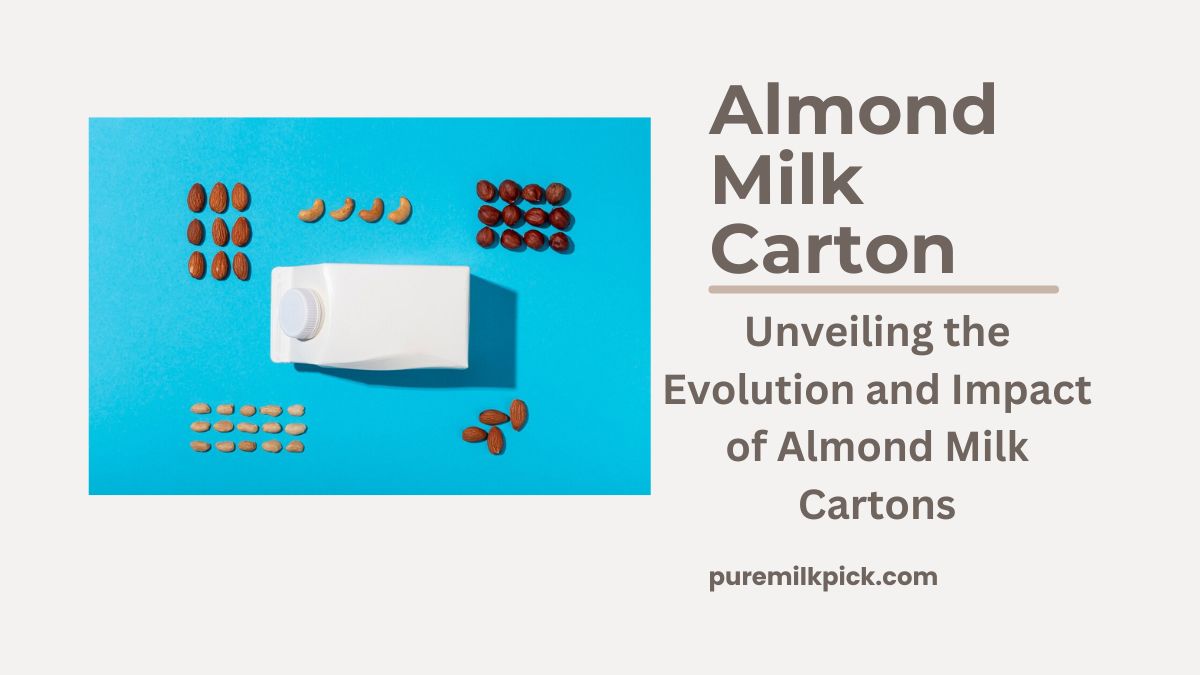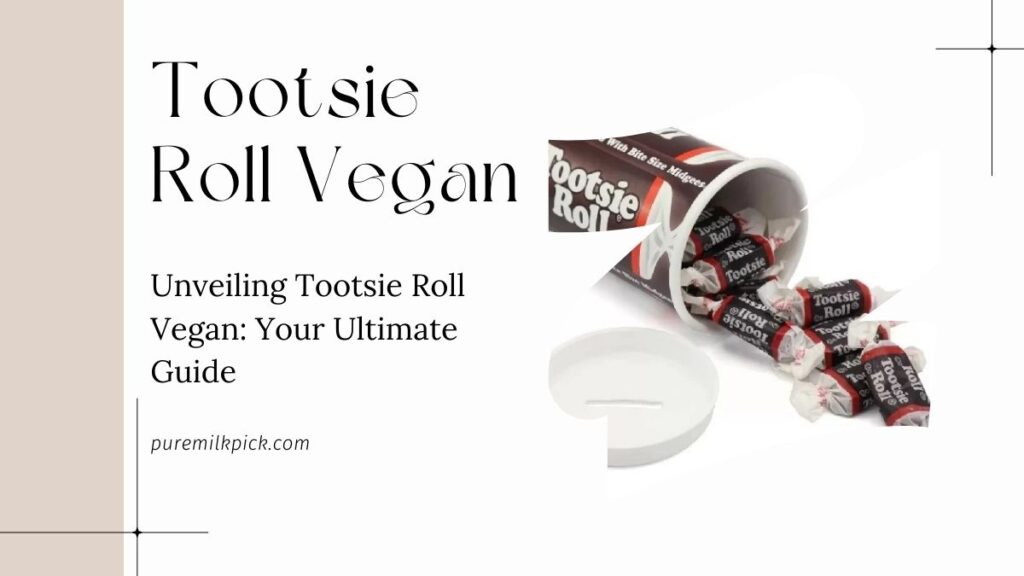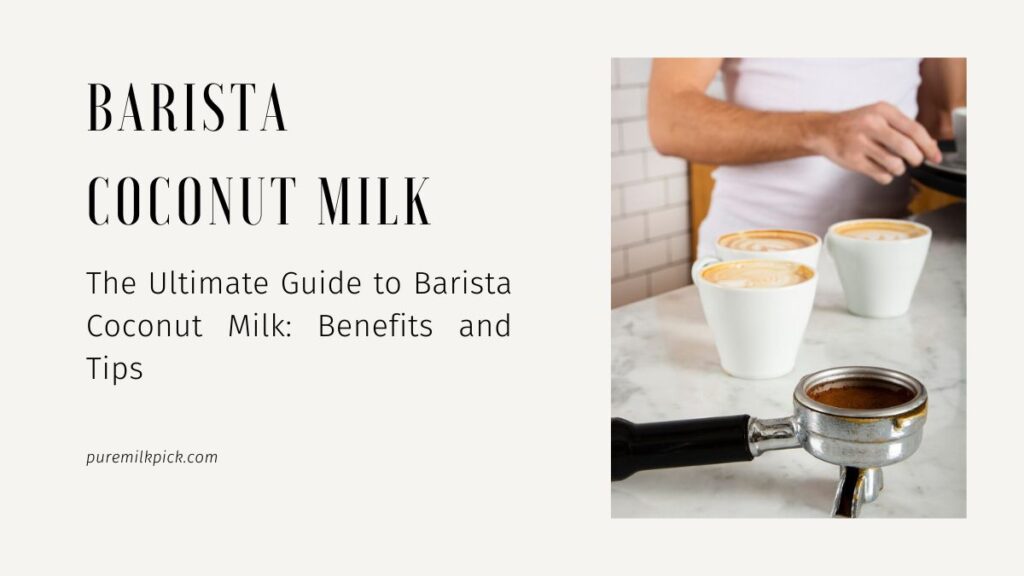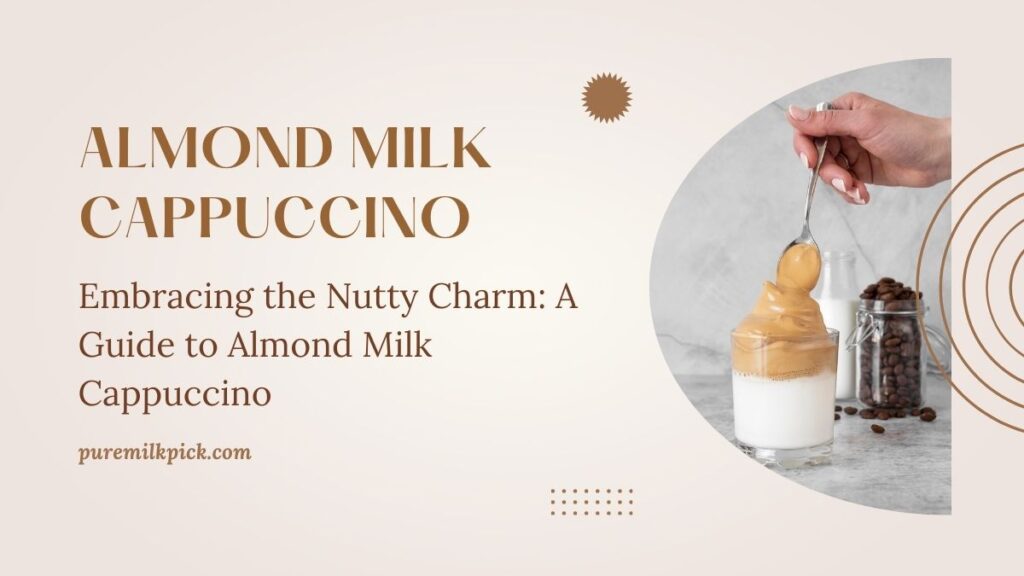Welcome to the dairy-free revolution! As the world continues to embrace plant-based alternatives, almond milk stands tall as a popular choice among health-conscious consumers. Amidst this rising trend, the packaging of almond milk has undergone a remarkable transformation, with almond milk cartons emerging as a sustainable and convenient solution for delivering this beloved beverage to consumers worldwide.
The Evolution of Almond Milk Packaging
Historical Background on the Development of Almond Milk as a Commercial Product
The roots of almond milk can be traced back centuries, originating from various cultures that used almonds to create a non-dairy milk alternative. However, its commercialization and widespread availability began more prominently in recent decades. Initially, almond milk was homemade, prepared using traditional methods that involved grinding soaked almonds and water, followed by straining to extract the milky liquid. This homemade concoction gained popularity among individuals seeking dairy-free alternatives due to dietary preferences or lactose intolerance.
Over time, the demand for almond milk surged, leading to its mass production and commercialization. This historical evolution reflects the growing consumer interest in plant-based milk substitutes and the quest for healthier beverage choices.
Read More: Safely Freezing, Thawing, and Using Almond Milk
The transition from Traditional Packaging Methods to Modern Carton Designs
In its early stages, almond milk was typically packaged in containers that ranged from glass bottles to plastic containers. These packaging options, while functional, had limitations in terms of preserving freshness and sustainability.
However, the landscape of almond milk packaging underwent a significant transformation with the emergence of modern carton designs. These cartons became the preferred choice for packaging almond milk due to their several advantages over traditional packaging methods.
Factors Influencing the Shift to Carton Packaging (Environmental Concerns, Convenience, etc.)
The transition to carton packaging for almond milk was catalyzed by various influential factors. Environmental concerns played a pivotal role in this shift, as consumers and manufacturers alike sought more sustainable alternatives to reduce the environmental impact of packaging. Cartons, made from renewable resources and featuring recyclable materials, presented a more eco-friendly option compared to traditional plastic or glass containers.
Additionally, the convenience offered by carton packaging significantly contributed to its adoption. These cartons are lightweight, easy to handle, and often feature resealable designs, enhancing their practicality for consumers seeking convenience in their daily lives. The increasing emphasis on portability and ease of use aligned perfectly with the evolving preferences of modern consumers, further fueling the transition towards carton packaging for almond milk.
Understanding Almond Milk Cartons
Components and materials used in almond milk cartons (tetra packs, sustainable materials)
Almond milk cartons, the preferred packaging choice for this dairy alternative, boast a thoughtful composition that aligns with sustainability goals. Primarily crafted from tetra packs or sustainable materials, these cartons strike a harmonious balance between durability, functionality, and environmental responsibility. Tetra packs, often used for almond milk cartons, comprise layers of paper, plastic, and aluminum. This blend ensures both structural integrity and protection against external elements, maintaining the product’s quality.
Different sizes and shapes available in the market
Furthermore, the diverse array of sizes and shapes available in the market caters to varying consumer needs. From single-serving portions ideal for on-the-go consumption to larger family-sized containers, almond milk cartons offer versatility and convenience. The packaging’s adaptability to different lifestyles emphasizes its consumer-centric design.
Advantages of carton packaging for almond milk (shelf life, portability, recyclability)
The advantages of carton packaging for almond milk are multifaceted. Firstly, it significantly extends the shelf life of the beverage, ensuring freshness and quality for a more extended period compared to other packaging alternatives. Secondly, its lightweight and compact nature enhances portability, making it suitable for transportation and storage, thereby aligning with modern lifestyles. Lastly, one of its most compelling features is its high recyclability rate, contributing positively to environmental sustainability efforts.
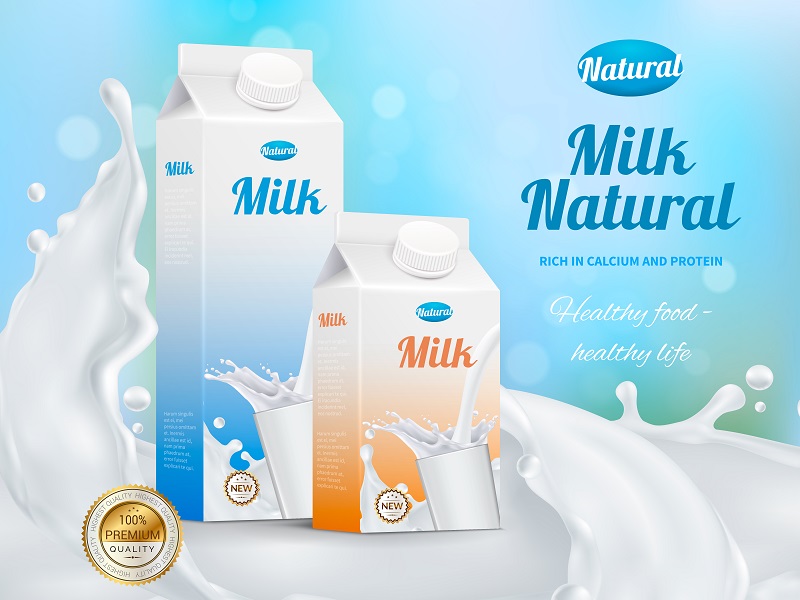
Environmental Impact
Comparison between carton packaging and other packaging options (plastic, glass)
A significant aspect driving the prominence of almond milk cartons is their positive environmental impact compared to other packaging options like plastic or glass. Carton packaging for almond milk, when analyzed against plastic or glass, demonstrates superior eco-friendly characteristics. They generally require fewer resources to produce and are lighter in weight, resulting in reduced transportation emissions.
Sustainability efforts in the almond milk industry (recyclability, renewable resources)
Moreover, the almond milk industry has proactively embraced sustainability measures. Focus on recyclability and the utilization of renewable resources in carton production aligns with eco-conscious initiatives. These efforts signify a commitment to reducing the environmental footprint associated with the production and disposal of packaging materials.
How almond milk cartons contribute to reducing carbon footprint
The commendable role played by almond milk cartons in reducing the carbon footprint cannot be overlooked. Their lightweight nature significantly reduces transportation emissions, thereby minimizing overall carbon output during distribution. Additionally, the emphasis on using renewable resources for manufacturing these cartons further contributes to the reduction of greenhouse gas emissions.
Innovations and Design Features
Advanced Packaging Technologies Improving Carton Functionality
Almond milk cartons have witnessed continuous evolution in their design and functionality, primarily driven by advanced packaging technologies. Resealable caps and easy pour spouts are among the innovative features enhancing consumer convenience. Resealable caps ensure the preservation of freshness by securely sealing the carton after each use. Easy pour spouts facilitate a spill-free pouring experience, enhancing user satisfaction and minimizing waste.
Creative Designs and Branding Strategies in Almond Milk Cartons
Creative design elements and strategic branding have become integral in distinguishing almond milk cartons in a competitive market. Eye-catching designs, vibrant colors, and informative labeling contribute to brand recognition and consumer engagement. These elements not only attract attention but also communicate the product’s quality and values, influencing purchasing decisions.
Impact of Packaging Design on Consumer Perception and Purchasing Decisions
The packaging design of almond milk cartons plays a pivotal role in shaping consumer perception and influencing purchasing choices. A well-designed carton conveys authenticity, quality, and a commitment to sustainability, which resonates positively with eco-conscious consumers. Studies have shown that appealing packaging designs significantly impact consumer purchasing decisions, highlighting the importance of visual appeal and messaging in capturing consumer interest.
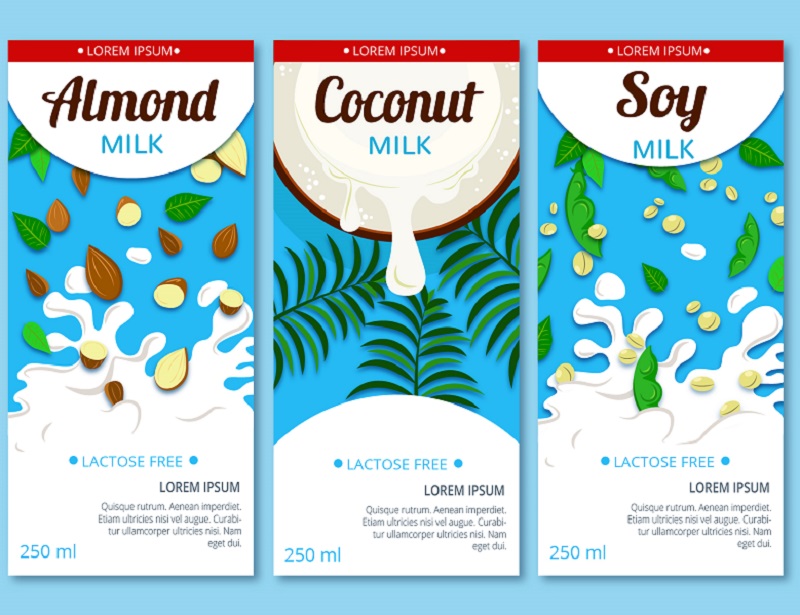
Consumer Convenience and Practicality
Portability and Convenience of Almond Milk Cartons for Various Lifestyles
Almond milk cartons offer unparalleled convenience and portability, catering to diverse lifestyles. Their lightweight and ergonomic design makes them easy to carry and store, ideal for individuals leading busy lives. Whether for use at home, work, or on the go, these cartons provide hassle-free accessibility to almond milk without compromising on freshness or taste.
Storage Tips and Best Practices for Preserving Almond Milk in Cartons
Proper storage is crucial for maintaining the quality and taste of almond milk. Storing cartons in a cool, dry place away from direct sunlight helps prolong shelf life. Refrigerating the product after opening ensures its freshness for an extended period. Following expiration dates and handling cartons with care also contribute to preserving the beverage’s quality.
Consumer Feedback and Preferences Regarding Carton Packaging for Almond Milk
Consumer feedback highlights the widespread acceptance and preference for carton packaging among almond milk consumers. The convenience, recyclability, and user-friendly features of these cartons align with consumer expectations. Positive feedback often emphasizes the ease of use and environmental consciousness associated with carton packaging.
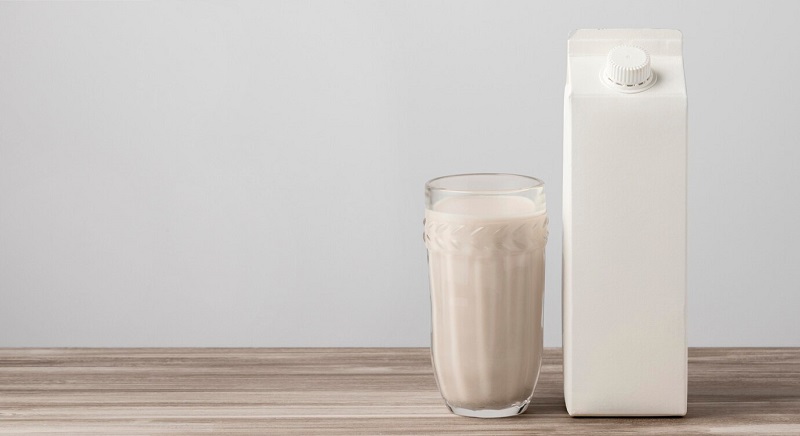
Challenges and Future Trends
Challenges Faced by Almond Milk Cartons
Despite their advantages, almond milk cartons encounter challenges such as potential leakage and limitations in storage. Manufacturers continually strive to address these issues through innovative design improvements and material enhancements.
Emerging Trends in Almond Milk Carton Packaging
Technological advancements and sustainable innovations are driving emerging trends in almond milk carton packaging. Anticipated trends include further enhancements in leak-proof designs, the integration of smart packaging technologies, and an increased focus on using bio-based and compostable materials.
Predictions for the Future of Almond Milk Carton Design and Sustainability Efforts
The future of almond milk carton design appears promising, with a strong emphasis on sustainability and user-centric features. Innovations in eco-friendly materials, coupled with design improvements to address existing challenges, will likely shape the next generation of carton packaging, solidifying its role as a sustainable beverage packaging solution.
Conclusion
Almond milk cartons have revolutionized the beverage industry, offering a blend of environmental benefits and consumer convenience. Their evolution, from innovative design features to consumer preferences, highlights their significance in shaping sustainable packaging practices. These cartons stand as a testament to the industry’s commitment to both functionality and environmental responsibility, setting a benchmark for future packaging solutions.
Frequently asked questions (FAQs) about almond milk cartons
Almond milk cartons are typically recyclable due to their composition of paperboard, plastic, and aluminum layers. However, the recyclability might vary based on local recycling programs. To ensure proper recycling, consumers should check their local recycling guidelines and facilities to confirm if almond milk cartons are accepted and how they should be prepared for recycling.
Once opened, almond milk stored in cartons typically lasts around 7-10 days when refrigerated. However, the shelf life may vary depending on factors such as the specific brand, storage conditions, and preservatives used. It’s essential to check the expiration date on the carton and consume the almond milk within the recommended timeframe for the best quality and safety.
Almond milk cartons are generally considered more environmentally friendly than some other packaging options, such as plastic bottles. They are often made from renewable resources, are lightweight, and have a lower carbon footprint. Additionally, advancements in carton design and materials have made them increasingly recyclable and eco-friendly. However, the overall environmental impact might vary based on factors like transportation, recycling infrastructure, and disposal methods in different regions.
